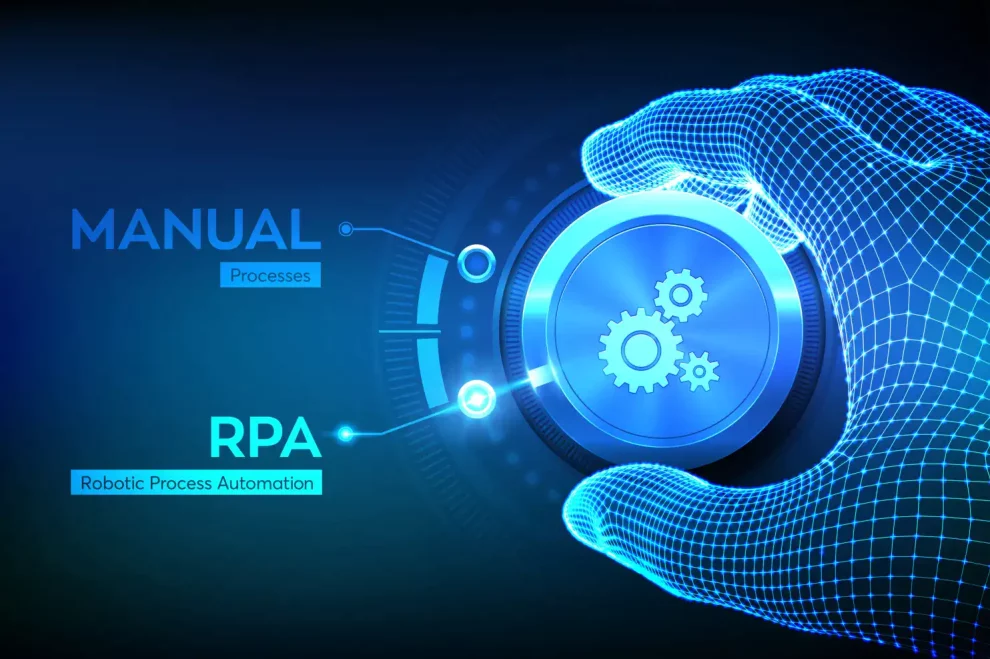In today’s fast-paced business world, time is a precious resource. Repetitive, manual tasks like data entry and report generation drain valuable employee hours that could be better spent on innovation and strategy.
Enter Robotic Process Automation (RPA) – a game-changing technology that liberates your employees from the mundane. RPA eliminates repetitive tasks through software “bots” that mimic human actions. This unleashes new levels of productivity, efficiency and focus.
What is RPA and How Does it Work?
RPA bots are configured with rules that allow them to interact with applications, follow workflows, manipulate data and complete tasks just like humans do – but faster and without errors. For example, an RPA bot can:
- Log into multiple applications and systems using credentials
- Enter data, cut, copy and paste data across systems
- Read and write to databases
- Open emails and attachments
- Fill in forms and submit them
- Scrape data from documents and web pages
- Make calculations
- Trigger responses and alerts based on rules
RPA mimics routinized computer and human interactions to complete rules-based digital tasks end-to-end. This allows employees to focus on more satisfying, value-added work.

The Business Case for RPA
The benefits of RPA make a compelling case for adoption:
1. Increased Efficiency
By eliminating tedious tasks, RPA enables employees to focus on higher-value work that is better aligned to their skills and interests. Studies show that RPA can boost productivity by 20-30% or more.
2. Enhanced Accuracy
Unlike humans, software robots do not tire or make accidental errors. RPA minimizes mistakes and improves data quality.
3. Faster Processes
Tasks that once took hours or days now take just seconds or minutes with RPA bots. This accelerates turnaround times and customer service.
4. Significant Cost Savings
RPA reduces labor costs associated with manual tasks. Coupled with enhanced accuracy and efficiency, this translates to major cost reductions.
5. Strengthened Compliance
By consistently applying predefined rules, RPA bots minimize compliance risks and reinforce adherence to regulations.
6. 24/7 Productivity
Software bots work around the clock without breaks. RPA enables organizations to scale tasks during off-hours and improve responsiveness.
Real-World RPA Use Cases
RPA delivers value across functions, industries and use cases, including:
Finance and Accounting
- Accounts payable/receivable
- Auditing and financial reporting
- General ledger reconciliation
- Expense report processing
- Invoice matching and posting
Human Resources
- Onboarding new employees
- Benefits administration
- Payroll processing
- Leave and attendance tracking
- Employee record management
Supply Chain Management
- Purchase order creation
- Inventory control
- Shipping and logistics coordination
- Production planning
IT and Data Management
- Data entry from paper/PDF forms into IT systems
- Web scraping and data extraction
- Report generation from multiple data sources
- Database migration and integration
Customer Service
- Customer information verification
- Order status checks and notifications
- FAQ responses via chat and email
- Survey follow-ups and appointment confirmations
- Social media monitoring and response
Getting Started: A 5-Step RPA Implementation Guide
Ready to jump into RPA? Here is a step-by-step guide to spearhead automation in your organization:
1. Identify Automation Opportunities
Analyze your key workflows and processes to pinpoint the best tasks to automate. Prioritize high-volume, repetitive tasks with clear rules and logic. Data entry, report generation and customer notifications are prime candidates.
2. Select Your RPA Software
Leading RPA platforms include UiPath, Automation Anywhere, Blue Prism and Microsoft Power Automate. Compare options considering ease of use, security, scalability and vision. Many vendors offer free trials to test software.
3. Develop and Test RPA Bots
Work with developers and business analysts to design your automation workflows. Thoroughly test bots in a sandbox environment before deployment to catch errors.
4. Deploy and Monitor
With testing complete, deploy bots into production environments and monitor their activity. Track metrics like hours saved, tasks automated and user adoption to showcase value.
5. Continuously Improve
Regularly assess automation opportunities and optimize existing bots. Update workflows to align with changing business needs. Expand RPA across departments to maximize benefits.
The Future of Intelligent Automation
RPA doesn’t stand still. The technology is rapidly evolving to incorporate artificial intelligence (AI), machine learning (ML) and other innovations. This empowers RPA with capabilities like:
- Document understanding – AI can classify documents and extract tables, text and data for processing by RPA bots.
- Chatbot integration – Customer service chatbots can handover conversations to human agents or trigger RPA bots.
- Enhanced decision-making – Machine learning algorithms help RPA bots handle more complex situations with fuzzy logic rather than just rules.
- Process mining – Analyzing system logs helps discover automation opportunities and optimize workflows.
By seamlessly integrating RPA with complementary technologies, the future is one of smarter automation that collaborates with humans to unlock productivity and innovation.
The Bottom Line
RPA is a no-brainer for automating repetitive, manual tasks. The benefits range from unlocking employee productivity to improved customer service and reduced costs. Following a clear roadmap helps ensure successful implementation.
So are you ready to eliminate the drudgery of mundane work? Get started today with RPA and transform your operations for the future!
















Add Comment